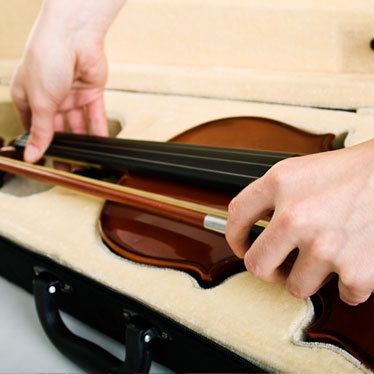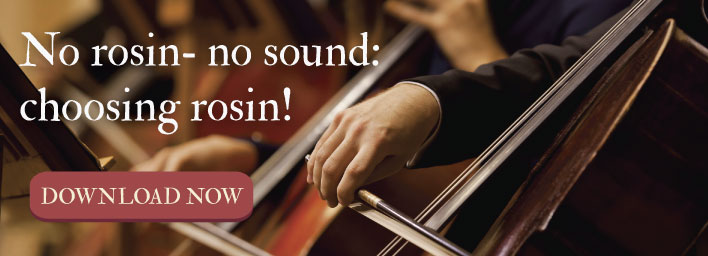How To Store Your School Instruments Safely During The Summer

T
he delicate construct of string instruments - combined with the "living" qualities they have when it comes to expansion/contraction and their vulnerability to temperature fluctuations and humidity - make careful storage a necessity during seasonal breaks, especially for the long summer holiday.
As you prepare to close your classroom for the end of the year, take special precautions to store the orchestral instruments as carefully as possible. A few extra steps - and potentially a few extra dollars - proactively spent to safely store school instruments save hundreds or thousands in terms of fewer repairs and/or replacements when school commences next fall.
Read, How to Close Your Classroom For the Summer..." for additional tips that save time when it's time to start all over again next year.
Get students involved in late-spring instrument cleaning (and inspections)
Instruments should be cleaned well before being stored. Get the students involved and have each one perform a thorough wipe down of their instrument and accessories, so they are all put to bed free of dust, moisture, potential "gunk" and debris that may have coated their surfaces during the year. It's a perfect opportunity to teach newer/beginning students how to clean and how to polish string instruments.
Have students release tension on the strings, letting the strings enjoy a "relaxing" vacation too - so they last longer once they're in use again. This also prevents them from snapping and putting undue pressure on the neck, which can cause it to warp. Similarly, students should loosen the tension on the bows.
This is also an ideal time to conduct inspections, putting aside any instruments that may be in need of repair or renovation.
Check for damage and repair issues
There's no point in storing a damaged instrument away for the summer. Now's the time to restring, repair/replace bridges, and address any other repairs or adjustments needed before next year. If the repairs require professional attention, summer break is the perfect time to have that done, ensuring the instruments are ready to go when classes begin in the fall.
Secure Storage Saves Instrument Lives
While the school's security system is a bonus, a secure - and preferably locked - location is the ideal when you're talking about tens of thousands of dollars'-worth of instruments (or more, depending on the size of your school).
Vacant school properties are at risk for summertime pranks and vandalism, so storing the instruments in a secure closet or storage space, with a high-quality lock, keeps instruments out of site and less accessible should a summertime break-in occur.
Is your school particularly vulnerable to crime or theft during breaks? It might be worth contacting local storage facilities to see if they will offer your school a deal - or even donate a few months of secure summertime storage as part of their "orchestra sponsorship." Some storage facilities have temperature/humidity controlled options - a major bonus if you live in an area with high-temps and humidity levels.
Try to ensure every instrument has a case
Sometimes, school instruments are stored without a case for cost- and space-saving reasons. This makes the instruments particular vulnerable, especially if others are using the space where they're stored for summer school or community events. If it's not possible to house each instrument in a case by this year's end, make it a goal to eventually obtain cases for each instrument using donations from local music stores and the community, via fundraisers, etc.
Focus on ideal humidification levels
How would your body respond if it was locked in a closet for two or three months without conditioned air? Well, since string instruments do best at the same humidity levels as humans (between 40% and 60%), you can understand why regulating humidity is essential.
Since most public school budgets don't account for summertime utility spending, you can take a more affordable route by utilizing instrument-specific humidification tools. Companies like Boveda make affordable humidification accessories that work well in instrument cases.
If you live in an unusually humid area, consider adorning the closet with dehumidifying packs that wick moisture out of the air. These are very affordable and can be used en masse. You'll be amazed at all the water they've collected by the time you return next year - much of which would have been absorbed by the instruments' fragile wood bodies and parts.
Avoid all the directs
If the temperatures aren't able to remain consistent, do your best to prohibit intense fluctuations by keeping instruments out of direct sunlight and away from heating and air conditioning registers or vents.
Again, the more you can involve your students in the instrument preparation and storing procedures, the better you model best practices for proper string instrument care – a valuable lesson that will last a lifetime.
Now, take deep breaths, know you're almost done for the year, and have a wonderful summer vacation.


